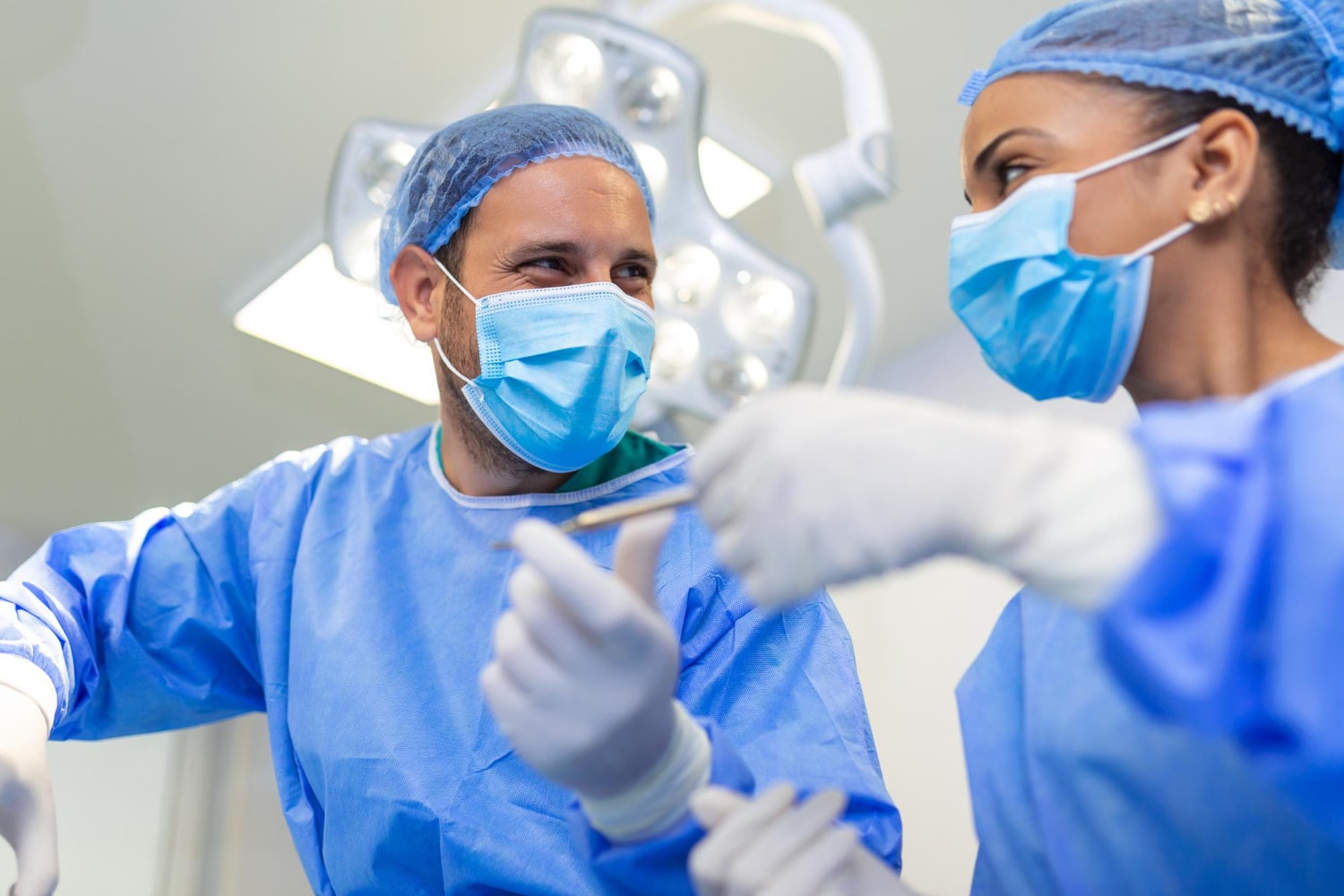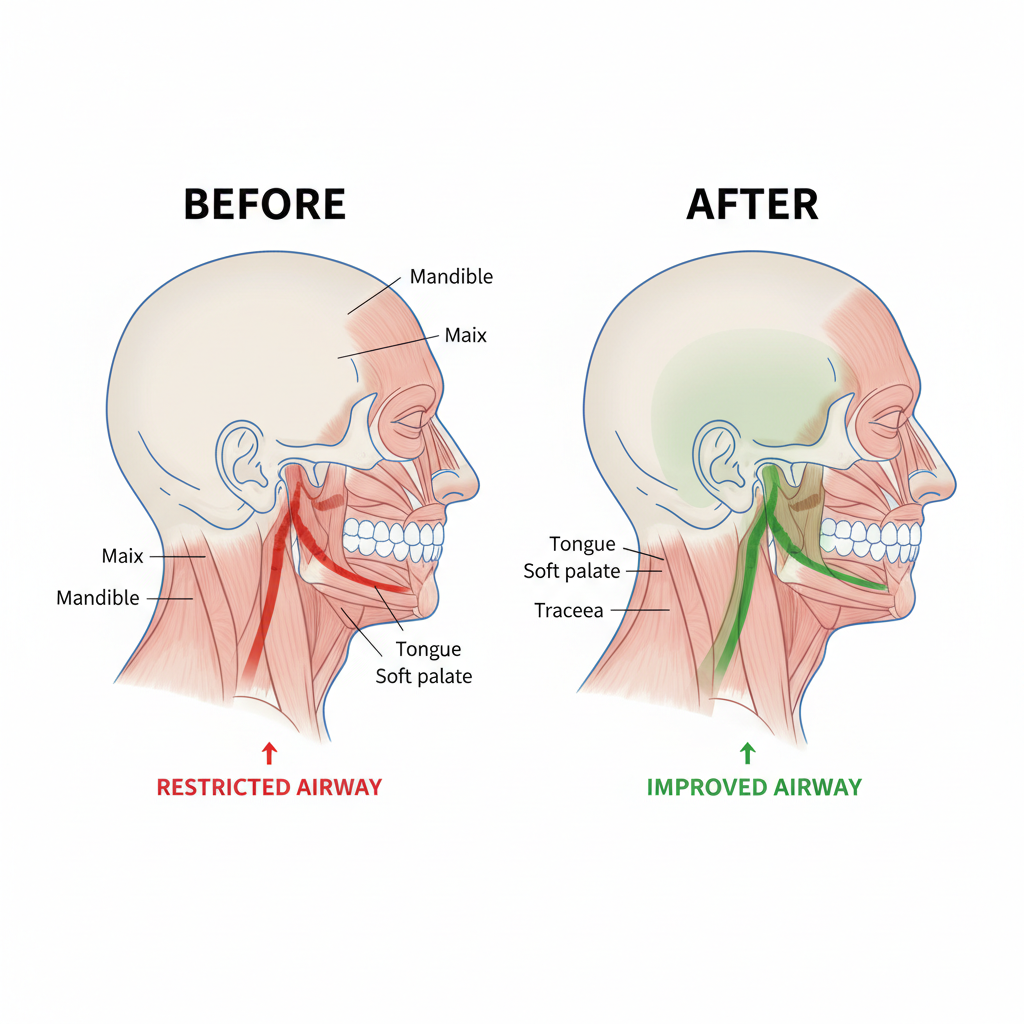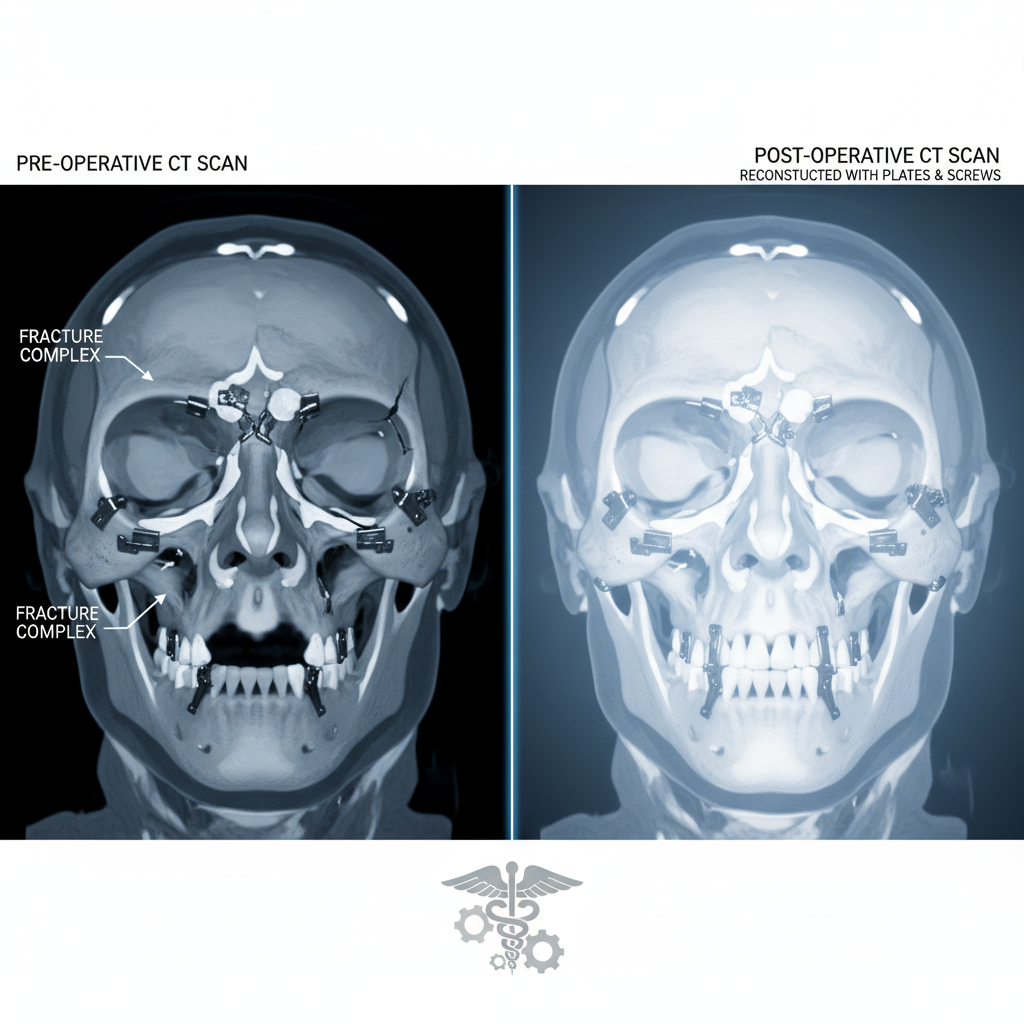Orthognathic surgery, also known as corrective jaw surgery, may seem like a daunting prospect. However, the surprising success rate of this procedure is enough to put anyone’s mind at ease. In fact, orthognathic surgery has proven to be an effective treatment option for a variety of conditions, including facial deformities, misaligned jaws, and obstructive sleep apnea.
With advancements in technology and surgical techniques, orthognathic surgery has become more precise and predictable, leading to better outcomes for patients. By repositioning the jaw and correcting any abnormalities, this procedure not only improves the function of the jaw but also enhances facial aesthetics and overall quality of life.
In this comprehensive guide, we will delve into everything you need to know about orthognathic surgery. From understanding the procedure and its benefits to preparing for the surgery and the recovery process, we will leave no stone unturned. So, if you’re considering orthognathic surgery or simply want to learn more about this transformative procedure, read on to discover the surprising success rate and the life-changing results it can offer.
What is orthognathic surgery?
Orthognathic surgery, also known as corrective jaw surgery, is a comprehensive surgical procedure that addresses issues related to the jaws and facial bones. This specialized type of surgery is performed by an oral and maxillofacial surgeon, who has undergone extensive training in the diagnosis, treatment, and management of conditions affecting the jaw, face, and neck.
The primary purpose of orthognathic surgery is to correct misaligned or disproportionate jaws, which can lead to a variety of functional and aesthetic concerns. By repositioning the jaw and aligning the teeth, this procedure aims to improve the overall function of the bite, enhance facial appearance, and address any underlying skeletal or dental abnormalities.
Orthognathic surgery is a complex and intricate procedure that involves the precise manipulation of the jaw bones, often in conjunction with orthodontic treatment. The surgeon may reposition the upper jaw (maxilla), lower jaw (mandible), or both, depending on the specific needs of the patient. This careful repositioning can address a wide range of issues, from correcting an overbite or underbite to improving the overall symmetry and balance of the face.
Conditions that may require orthognathic surgery
Orthognathic surgery is often recommended for individuals who are experiencing a variety of functional and aesthetic concerns related to the jaw and facial structure. Some of the most common conditions that may require this type of surgical intervention include:
- Skeletal malocclusions: Misaligned or disproportionate jaws, such as overbites, underbites, and crossbites, can lead to difficulties with chewing, speaking, and overall facial appearance. Orthognathic surgery can help correct these skeletal discrepancies and improve the overall alignment of the jaw.
- Facial deformities: Congenital abnormalities or developmental issues, such as cleft lip and palate, can result in significant facial asymmetries and functional problems. Orthognathic surgery can be used to address these deformities and restore a more balanced and harmonious facial appearance.
- Obstructive sleep apnea: In some cases, a misaligned or recessed jaw can contribute to the development of obstructive sleep apnea, a condition characterized by the repeated obstruction of the airway during sleep. Orthognathic surgery can help reposition the jaw and improve airway function, effectively treating this sleep disorder.
- Temporomandibular joint (TMJ) disorders: Misalignment of the jaw can lead to issues with the temporomandibular joint, the hinge-like joint that connects the lower jaw to the skull. Orthognathic surgery may be recommended to correct these problems and alleviate associated pain and discomfort.
- Trauma-related jaw issues: Injuries or accidents that result in damage to the jaw or facial bones may require orthognathic surgery to restore proper function and aesthetics.
Benefits of orthognathic surgery
Orthognathic surgery offers a wide range of benefits for individuals who are struggling with jaw-related issues or facial deformities. Some of the most significant advantages of this procedure include:
- Improved facial aesthetics: By repositioning the jaw and correcting any asymmetries or disproportions, orthognathic surgery can enhance the overall balance and harmony of the face, leading to a more aesthetically pleasing appearance.
- Enhanced functionality: Correcting misaligned jaws can significantly improve the function of the bite, making it easier to chew, speak, and swallow. This can have a positive impact on an individual’s overall quality of life.
- Relief from TMJ disorders: By addressing the underlying cause of temporomandibular joint issues, orthognathic surgery can effectively alleviate pain, discomfort, and other symptoms associated with these disorders.
- Improved breathing and sleep: In cases of obstructive sleep apnea, orthognathic surgery can help reposition the jaw and improve airway function, leading to better sleep quality and reduced risk of associated health problems.
- Boosted self-confidence: The transformative effects of orthognathic surgery can have a profound impact on an individual’s self-esteem and confidence, as they experience the physical and emotional benefits of a more balanced and harmonious facial appearance.
- Long-lasting results: When performed by a skilled and experienced oral and maxillofacial surgeon, orthognathic surgery can provide long-lasting, stable results that can significantly improve an individual’s quality of life for years to come.
The success rate of orthognathic surgery
The success rate of orthognathic surgery is remarkably high, with studies showing that the vast majority of patients experience successful outcomes and are satisfied with the results of their procedure. In fact, the overall success rate of orthognathic surgery is estimated to be between 90-95%, indicating that this treatment option is highly effective in addressing a wide range of jaw-related issues and facial deformities.
One of the key factors contributing to the high success rate of orthognathic surgery is the advancements in surgical techniques and technologies. Modern surgical methods, such as computer-aided planning and 3D imaging, have significantly improved the precision and accuracy of these procedures, allowing surgeons to achieve more predictable and consistent results.
Additionally, the comprehensive approach to patient care, which often involves a multidisciplinary team of healthcare professionals, including orthodontists, oral and maxillofacial surgeons, and speech therapists, has played a crucial role in ensuring the success of orthognathic surgery. This collaborative approach ensures that each patient’s unique needs are addressed, and the treatment plan is tailored to their specific requirements, further contributing to the high success rate of the procedure.
It’s important to note that the success of orthognathic surgery is not solely measured by the surgical outcome but also by the patient’s overall satisfaction with the results. Studies have shown that the vast majority of patients who undergo orthognathic surgery report significant improvements in their quality of life, with enhanced facial aesthetics, improved functionality, and increased self-confidence.
Factors that contribute to the success of orthognathic surgery
The success of orthognathic surgery is influenced by a variety of factors, both within the surgical process and in the patient’s overall health and lifestyle. Understanding these factors can help patients make informed decisions and increase the likelihood of achieving their desired outcomes. Some of the key factors that contribute to the success of orthognathic surgery include:
- Surgeon expertise: The skill and experience of the oral and maxillofacial surgeon performing the procedure are crucial to the success of orthognathic surgery. Patients should choose a surgeon who is board-certified and has a proven track record of successful outcomes.
- Comprehensive pre-surgical planning: Thorough pre-surgical planning, including 3D imaging, computer-aided design, and close collaboration between the surgeon and the patient, is essential for achieving the desired results.
- Adherence to post-operative instructions: Patients who closely follow the surgeon’s instructions for post-operative care, including proper oral hygiene, physical therapy, and lifestyle modifications, are more likely to experience successful outcomes and a smooth recovery.
- Overall health and wellness: Patients who are in good overall health, with no underlying medical conditions that could interfere with the healing process, are more likely to have successful surgical outcomes.
- Realistic expectations: Patients who have realistic expectations about the outcomes of orthognathic surgery and understand the potential risks and limitations of the procedure are more likely to be satisfied with the results.
- Multidisciplinary care: A collaborative approach involving a team of healthcare professionals, including orthodontists, speech therapists, and other specialists, can significantly contribute to the success of orthognathic surgery.
By understanding and addressing these key factors, patients can increase their chances of achieving successful outcomes and enjoying the long-term benefits of orthognathic surgery.
Preparing for orthognathic surgery
Preparing for orthognathic surgery is a crucial step in ensuring a smooth and successful procedure. Patients who take the time to properly prepare themselves, both physically and mentally, are more likely to experience a positive outcome and a faster recovery. Here are some of the key steps involved in preparing for orthognathic surgery:
- Comprehensive consultation: Before the surgery, patients will undergo a thorough consultation with their oral and maxillofacial surgeon. During this consultation, the surgeon will evaluate the patient’s condition, discuss the proposed treatment plan, and answer any questions or concerns the patient may have.
- Medical evaluation: Patients will undergo a comprehensive medical evaluation to ensure that they are in good overall health and do not have any underlying conditions that could interfere with the surgical process or recovery. This may include bloodwork, diagnostic imaging, and other tests as deemed necessary by the surgeon.
- Orthodontic treatment: In many cases, orthognathic surgery is performed in conjunction with orthodontic treatment. Patients may need to undergo a course of orthodontic therapy before the surgery to properly align the teeth and jaws, setting the stage for a successful surgical outcome.
- Lifestyle modifications: Patients may be asked to make certain lifestyle changes in the weeks or months leading up to the surgery, such as quitting smoking, maintaining a healthy diet, and engaging in regular physical activity to improve their overall health and support the healing process.
- Mental preparation: Undergoing orthognathic surgery can be a significant life event, and patients should take the time to mentally prepare themselves for the procedure and the recovery process. This may involve seeking support from family and friends, practicing relaxation techniques, and addressing any concerns or anxieties they may have.
- Financial planning: Patients should familiarize themselves with the financial aspects of the surgery, including insurance coverage, out-of-pocket expenses, and any necessary arrangements for time off work or childcare during the recovery period.
By taking the time to properly prepare for orthognathic surgery, patients can increase their chances of a successful outcome and a smooth recovery process.
The orthognathic surgery procedure
Orthognathic surgery is a complex and intricate procedure that involves the precise manipulation of the jaw bones to correct misalignments and restore proper function and aesthetics. The specific steps involved in the surgery will vary depending on the individual patient’s needs and the surgeon’s preferred surgical techniques, but the general process typically includes the following:
- Anesthesia: The patient will be placed under general anesthesia to ensure their comfort and safety during the procedure.
- Incisions: The surgeon will make incisions in the gums or inside the mouth to gain access to the underlying jaw bones.
- Bone repositioning: The surgeon will carefully reposition the upper and/or lower jaw bones to achieve the desired alignment and balance.
- Fixation: The repositioned jaw bones will be secured in place using plates, screws, or other fixation devices to ensure stability and proper healing.
- Closure: The incisions will be closed using sutures or other techniques to promote healing and minimize scarring.
- Orthodontic adjustments: In some cases, the surgeon may work in collaboration with an orthodontist to make final adjustments to the teeth and jaws to ensure optimal alignment and function.
The duration of the orthognathic surgery procedure can vary depending on the complexity of the case, but it typically ranges from 2 to 5 hours. Patients will remain in the hospital for a few days following the surgery to allow for close monitoring and the initiation of the recovery process.
It’s important to note that the specific details of the orthognathic surgery procedure may vary depending on the individual patient’s needs and the surgeon’s preferred techniques. Patients should have a thorough discussion with their surgeon to understand the specific steps involved in their procedure and what to expect during the recovery process.
Recovery and aftercare following orthognathic surgery
The recovery process following orthognathic surgery is a crucial aspect of the overall treatment, as it can significantly impact the final outcome and the patient’s overall quality of life. Patients can expect a comprehensive and well-planned aftercare regimen to support their healing and ensure a smooth transition back to their normal daily activities.
- Immediate post-operative care: In the days immediately following the surgery, patients will typically remain in the hospital for close monitoring and to begin the initial stages of the recovery process. This may include pain management, wound care, and the administration of antibiotics or other medications as needed.
- Dietary restrictions: Patients will be placed on a liquid or soft diet for the first few weeks following the surgery to allow the jaw to heal properly. As the healing process progresses, the patient’s diet will gradually be expanded to include more solid foods.
- Physical therapy: Patients may be referred to a physical therapist or other healthcare professional to help them regain strength, mobility, and function in the jaw and surrounding muscles. This may include exercises, massage, and other techniques to promote healing and improve overall function.
- Orthodontic adjustments: In many cases, patients will need to continue their orthodontic treatment following the orthognathic surgery to fine-tune the alignment of their teeth and ensure optimal function and aesthetics.
- Wound care and hygiene: Patients will be provided with instructions on how to properly care for their surgical incisions and maintain good oral hygiene during the recovery process to prevent infection and promote healing.
- Follow-up appointments: Patients will be scheduled for regular follow-up appointments with their surgeon and other healthcare professionals to monitor their progress, address any concerns, and make any necessary adjustments to the treatment plan.
The recovery process following orthognathic surgery can vary in duration, depending on the complexity of the procedure and the individual patient’s healing process. In general, most patients can expect to return to their normal daily activities within 4 to 6 weeks, with a full recovery taking several months. Throughout the recovery process, it is crucial for patients to follow their surgeon’s instructions and maintain open communication to ensure the best possible outcome.
Risks and complications of orthognathic surgery
While orthognathic surgery is generally a safe and effective procedure, as with any surgical intervention, there are some potential risks and complications that patients should be aware of. Understanding these risks and taking proactive steps to mitigate them can help ensure a successful outcome and a smooth recovery process.
- Infection: As with any surgical procedure, there is a risk of infection at the surgical site. Patients will be prescribed antibiotics to help prevent this, and they will be instructed on proper wound care and hygiene to minimize the risk.
- Bleeding and swelling: Patients can expect some degree of bleeding and swelling following the surgery, which is a normal part of the healing process. However, in some cases, excessive bleeding or swelling may occur, which may require additional treatment or intervention.
- Nerve damage: The surgical manipulation of the jaw bones can potentially impact the nerves in the area, leading to temporary or, in rare cases, permanent numbness or tingling in the lips, chin, or cheeks.
- Temporomandibular joint (TMJ) problems: While orthognathic surgery is often performed to address TMJ issues, in some cases, the procedure can lead to new or worsening TMJ problems, such as pain, clicking, or locking of the jaw.
- Nonunion or malunion of the jaw bones: In rare cases, the repositioned jaw bones may fail to heal properly, leading to a nonunion (lack of bone fusion) or a malunion (improper bone alignment).
- Aesthetic concerns: While orthognathic surgery is designed to improve the overall facial aesthetics, in some cases, patients may be dissatisfied with the final results or experience unexpected changes in their appearance.
To mitigate these risks, patients should choose an experienced and qualified oral and maxillofacial surgeon, follow all pre-operative and post-operative instructions, and maintain open communication with their healthcare team throughout the entire process. Additionally, patients should have realistic expectations about the potential risks and complications associated with orthognathic surgery and be prepared to work closely with their surgeon to address any issues that may arise.
Conclusion: Is orthognathic surgery right for you?
Orthognathic surgery has proven to be a highly successful and transformative procedure for individuals struggling with a variety of jaw-related issues and facial deformities. With a success rate of 90-95%, this comprehensive surgical intervention can effectively address a wide range of functional and aesthetic concerns, leading to improved quality of life and increased self-confidence.
By understanding the conditions that may require orthognathic surgery, the benefits it can provide, and the factors that contribute to its success, individuals can make an informed decision about whether this procedure is the right choice for them. The preparation process, the surgical procedure itself, and the recovery and aftercare are all crucial components that must be carefully considered.
While there are some potential risks and complications associated with orthognathic surgery, these can be effectively managed by choosing a skilled and experienced oral and maxillofacial surgeon, adhering to pre-operative and post-operative instructions, and maintaining open communication with the healthcare team.
Ultimately, the decision to undergo orthognathic surgery is a highly personal one,





